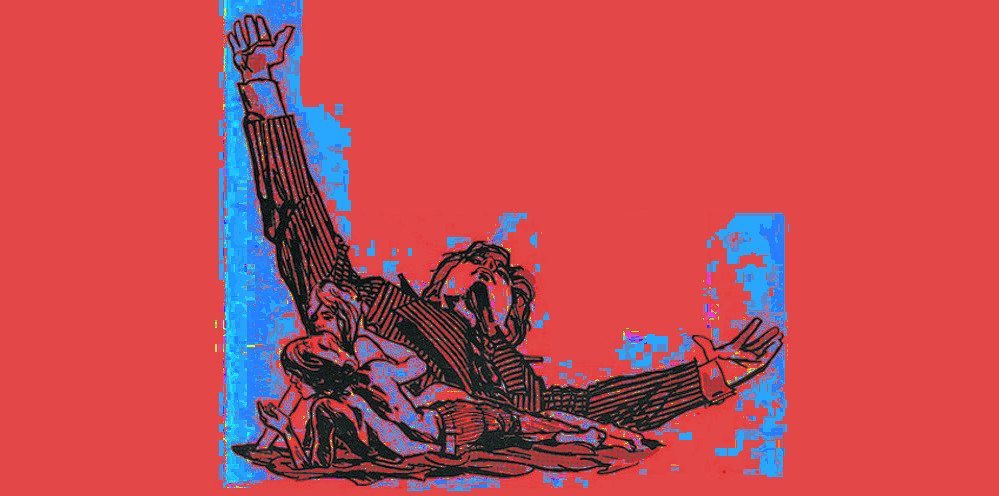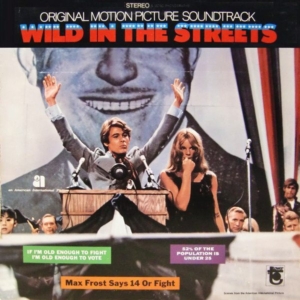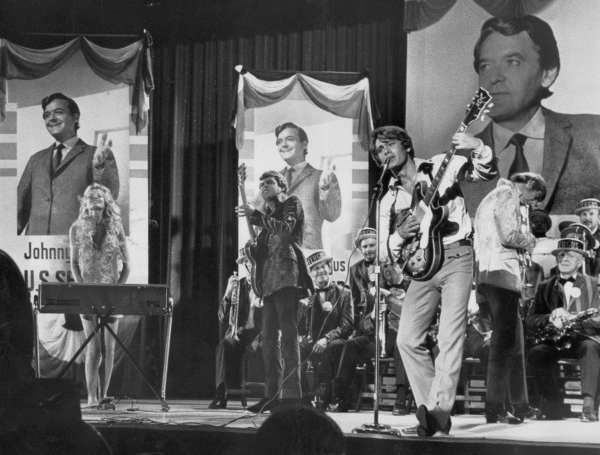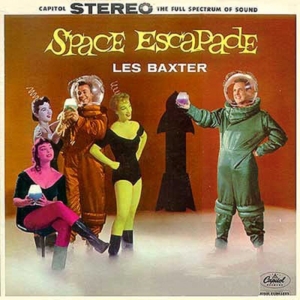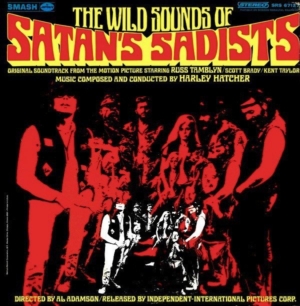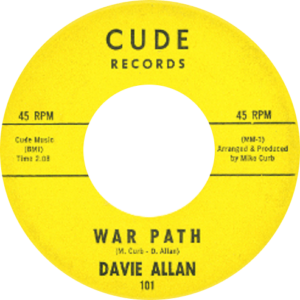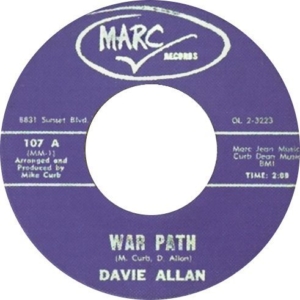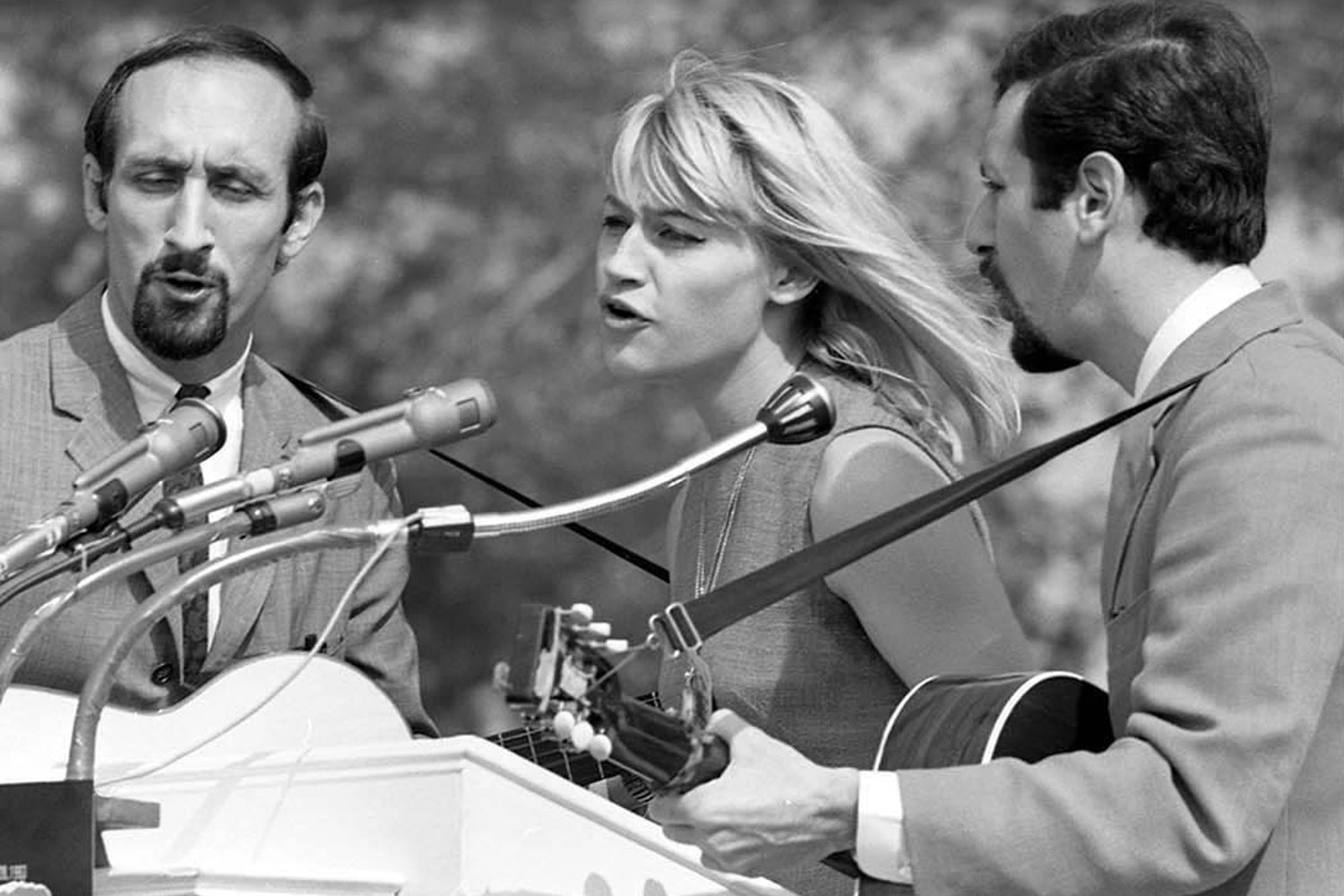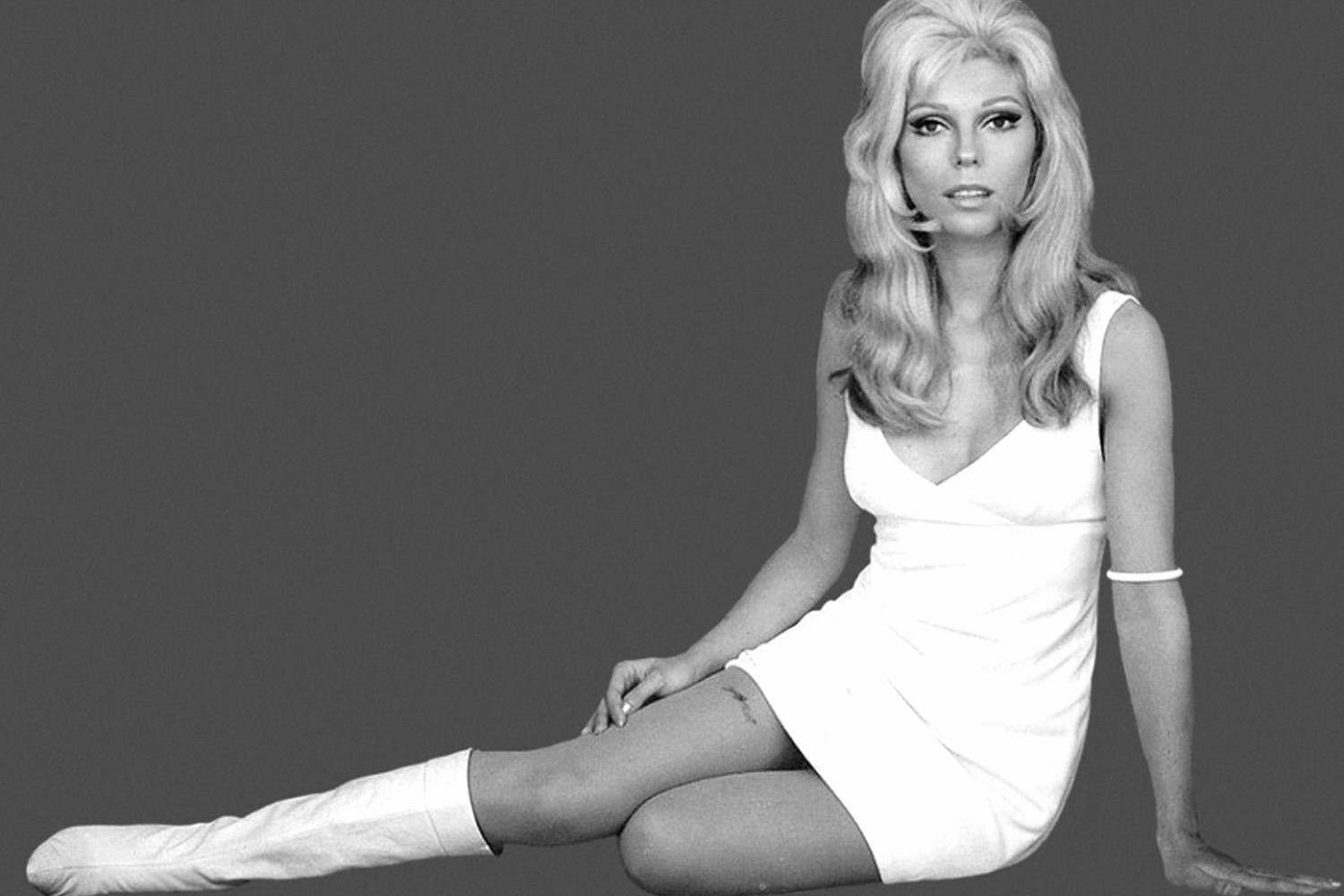Estimated reading time is 8 minutes.
IN 1968, AIP’S NEW MOVIE was not about bikers, babes, and devils. While “Wild In The Streets” was another American International Pictures exploitation B-movie, it was also a clever combination of black humor, sociopolitical satire, and some genuinely good rock & roll. The Avid Collector’s Guide to Wild In The Streets Part 1 addresses the records associated with that movie and its music. 1
This is the first of four parts that focus on the records revolving around that movie, with the primary focus is on the WILD IN THE STREETS original soundtrack album. A secondary focus is the contributions of Davie Allan and his Arrows to the whole affair.
Some facts, assumptions, misunderstandings, and myths are rent asunder concerning several offshoot projects from the movie, notably three other LP albums:
Tower ST-5099
Various artists: Wild In The Streets (soundtrack)
Tower ST-5139
Davie Allan & The Arrows: The Arrows Play Music From The Score Of The Motion Picture “Wild In The Streets”
Tower ST-5137
Max Frost & The Troopers: Shape Of Things To Come
Tower ST-5146
The Second Time: Listen To The Music
Each album is associated with Mike Curb’s Sidewalk Productions and was issued on Capitol Records’ Tower imprint. I have three basic goals in these articles:
1. To address the issue of who played what on which record.
2. To differentiate first pressings from later pressings of each record.
3 . To assign realistic market values to these records.
Before reading further, I suggest you first give a perusal to my own “Wild In The Streets As Sociopolitical Satire And Black Humor.”
Go ahead—I’ll wait here.
Front cover to the WILD IN THE STREETS soundtrack album on Tower Records. This is a various artists album and not the same album is that credited to Davie Allan & The Arrows (above).
Guide to Wild In The Streets part 1
The music will be discussed at some length, followed by a breakdown of each of the albums. Capitol Records manufactured and distributed both Tower and Curb’s own Sidewalk product, and considered the release of the soundtrack album WILD IN THE STREETS to be a big enough event to issue it in a deluxe gatefold jacket.
Apparently, Capitol believed that the movie would be a hit (it was) and that its success would carry the album into the upper reaches of the best-seller surveys (it did) and that justified the deluxe packaging. This packaging allowed Capitol to tack another dollar onto the retail price.
Despite this distinct advantage over a standard priced LP, WILD IN THE STREETS did not sell enough units to qualify for an RIAA Gold Record Award, which was based on $1,000,000 in sales at the wholesale level (about 600,000 copies in 1968).
Although a best-seller, Wild In The Streets did not reach the million-dollar mark to qualify for an RIAA Gold Record Award.
The album did not feature a name artist, nor was there a hit single upon which to hang some advance promotion—although that did come later. It did feature five new songs by Brill Building mainstays Barry Mann and Cynthia Weil.
Unfortunately, this could have been detrimental: looking back at the second half of the ’60s, many of us old enough to have lived through those years forget that writers of their kind were often looked down upon as hacks, in it for the bucks, not the music.
In fact, the songs that Mann and Weill turned in were rather feeble emulations of what was really happening in the hip music community. 2
Max Frost and his unnamed band on stage in support of Senator Harkins: from the left are Diane Varsi (keyboards), Kevin Coughlin (guitar), Christopher Jones (guitar and lead singer), and Larry Bishop (horn).
Different pressings exist
Each of the records discussed here have at least two recognizable variations on their West Coast and East Coast pressings (discussed in detail below). The differences are mostly a matter of the size of font and placement of type on the record’s labels used by Capitol’s printers.
But with the WILD IN THE STREETS soundtrack album there are two very different labels: the ten tracks on the record are the same recordings but are credited to five different artists, although not the same five artists on each of the two pressings!
The two pressings are easily identified by the artist’s credits on the labels: the five tracks that were performed by Max Frost (Christopher Jones) and his band in the movie are credited to either 13th Power (a real group) or to Max Frost & The Troopers (an unreal group).
The names of the fake groups—the Gurus and the Senators—are based on the scenes in which their songs appear.
This supports an argument that there were two pressings of the album separated by time, meaning that one is a definite first pressing while the other is a second.
The remaining five tracks on the album are credited to the Second Time (a real group), the Senators, the Gurus, and Jerry Howard. Psychedelic Senate (the Senators) and Shelly In Camp (the Gurus) were recorded under the direction of the film score’s composer, Les Baxter using local session musicians—not Davie Allan and his Arrows as some have assumed.
“The Wrecking Crew played on the tracks credited to the Second Time (Listen To The Music and Sally Le Roy) as well as Wild In The Streets, which was credited to Jerry Howard, the vocalist. Possibly, they also played on the two Les Baxter tracks. The drumming alone is indicative of certain Hal Blaine signatures, but I don’t detect Davie Allan’s presence anywhere on either of the Baxter tracks.” (The Seth Man)
Les Baxter made what is mostly easy-listening instrumental music, some of which are in the ‘lounge music’ or ‘exotica’ nature. His most sought after album is SPACE ESCAPADE (Capitol T-968/ST-968) from 1958.
So who played what where and when?
Trying to figure out who played what on any given Sidewalk or Tower soundtrack album from 1966-1968 has kept collectors busy for decades. Many groups under Mike Curb’s Sidewalk Productions umbrella were a mystery to critics and record buyers.
There were a few constants among the confusion (especially the AIP soundtracks), notably Mike Curb and Harley Hatcher, who were usually credited as producers on the jackets and labels. Musically the main man on these records was guitarist Davie Allan. He was often lead guitar and leader of the pack of uncredited musicians who recorded the music. These ad hoc ensembles might include studio musicians, friends, hangers-on, and occasionally even members of Allan’s own band!
Allan rarely received credit for his work, but if you bought enough of these albums you learned to recognize his distinct, succinct fuzzed sound! 3
Curb’s decisions to have lots of names associated with his projects led to a host of never-before-heard-of-groups finding their only credit on a Sidewalk Productions album. Many of these ‘groups’ bore psychedelic-sounding names that even then appeared to have been made up by someone who wanted to sound ‘with it’ and hip. Consequently, many of those groovy band names sounded contrived and just plain silly.
The front cover to this Smash album could lead one to believe it’s “The Wild Sounds Of Satan’s Sadists” by Harley Hatcher. The record’s labels indicate that it’s a various artists album titled “Satan’s Sadists.” Either way, six tracks are credited to Hatcher and four to the Nightriders, who may be Hatcher anyway. While not an AIP movie, the soundtrack music is a Pendulum-Sidewalk Production.
A few words on Mike Curb
Sidewalk Productions’ main man Mike Curb is a fascinating personality in the music industry and deserves his own essay. For the sake of brevity, I am only touching on a few points of interest to this article’s subject:
• In 1963, he started his first record company as a teenager! He quickly stepped into independent production deals for Brunswick, Capitol, Columbia, Dot, Mercury, United Artists, and Warner/Reprise, the latter company also signing him to a recording contract.
• In 1964, he launched Sidewalk Productions, which grew into Sidewalk Records. Both used Curb artists almost exclusively; many featured his buddy, Davie Allan.
• In 1965, he signed Sidewalk to a manufacturing and distribution deal with Capitol Records’ subsidiary, Tower Records.
• In 1966, he signed a deal to provide soundtracks to movies made by American International Pictures. AIP was one of the primary purveyors of exploitational movies for the perceived ‘youth culture’ at the time.
Curb’s first release on his own imprint was also his good friend’s Davie Allan’s first release. The odd company name was arrived at by using the first two letters of the last names of the two partners: “Cu” for Curb and “de” for Mary Dean.War Path received little attention and was reissued on the slightly larger Marc Records in short order. Both the Cude and Marc 45s are rather rare records, especially in NM condition.
Biker-and-babe flicks
AIP became identified with a string of biker-and-babe flicks, which often starred such non-biker-looking actors as Peter Fonda, Bruce Dern, Dennis Hopper, and Jack Nicholson. Many of these soundtracks featured music by Davie Allan and his Arrows, with Allan’s fuzz-drenched guitar associated with Harleys.
Some of the most successful titles involving Curb and Allan were The Wild Angels and Devil’s Angels (1966), and Born Losers (1967). The latter marked the first appearance of the iconic Billy Jack and was a HUGE international success. And of course Wild In The Streets (1968).
The music for these soundtracks—often written and produced by Curb—ranged from insipid to inspired, often in the same film. Curb was also known for his parsimonious use of recordings: he recycled songs, backing tracks, and even completed recordings among artists and even competing record companies! 4
FEATURED IMAGE: The artwork at the top of this page was lifted from an advertisement for the movie that appeared in newspapers around the country in 1968. The four interconnected article can be found here:
• The Avid Collectors Guide to “Wild in the Streets” Part 1
• The Avid Collectors Guide to “Wild in the Streets” Part 2
• The Avid Collectors Guide to “Wild in the Streets” Part 3
• The Avid Collectors Guide to “Wild in the Streets” Part 4
FOOTNOTES:
1 It is the first of four articles that were originally published in 2014 with a slightly longer title (“The Avid Record Collector’s Price Guide to Wild In The Streets”). These articles have been modified and updated because I have learned so much since then about using images and SEO (search engine optimization).
2 For differing opinions on this music, see the reviews at the end of the final part of this essay.
3 As some of us did, especially when the mono versions were deleted in 1968 and dumped into bargain bins around the country for a buck apiece!
4 The original article devoted much more attention to Mike, but some of it was political and really had no place in the text. So I removed it. Maybe I will expand the deleted text and post it as a new article . . .
Mystically liberal Virgo enjoys long walks alone in the city at night in the rain with an umbrella and a flask of 10-year-old Laphroaig who strives to live by the maxim, “It ain’t what you know that gets you into trouble; it’s what you know that just ain’t so.
I’ve been a puppet, a pauper, a pirate, a poet, a pawn, and a college dropout (twice!). Occupationally, I have been a bartender, jewelry engraver, bouncer, landscape artist, and FEMA crew chief following the Great Flood of ’72 (and that was a job that I should never, ever have left).
I am also the final author of the original O’Sullivan Woodside price guides for record collectors and the original author of the Goldmine price guides for record collectors. As such, I was often referred to as the Price Guide Guru, and—as everyone should know—it behooves one to heed the words of a guru. (Unless, of course, you’re the Beatles.)
